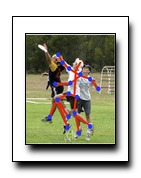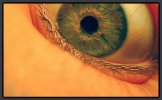
We describe a method for generating N-best configurations
from part-based models, ensuring that they do not overlap
according to some user-provided definition of overlap. We
extend previous N-best algorithms from the speech community
to incorporate non-maximal suppression cues, such that
pixel-shifted copies of a single configuration are not
returned. We use approximate algorithms that perform nearly
identical to their exact counterparts, but are orders of
magnitude faster. Our approach outperforms standard methods
for generating multiple object configurations in an image.
We use our method to generate multiple pose hypotheses for
the problem of human pose estimation from video sequences.
We present quantitative results that demonstrate that our
framework significantly improves the accuracy of a
state-of-the-art pose estimation algorithm.
Download: pdf
Text Reference
Dennis Park and Deva Ramanan.
N-best maximal decoders for part models.
In
ICCV, 2627–2634. 2011.
BibTeX Reference
@inproceedings{ParkR_ICCV_2011,
author = "Park, Dennis and Ramanan, Deva",
title = "N-best maximal decoders for part models",
booktitle = "ICCV",
year = "2011",
pages = "2627-2634"
}
